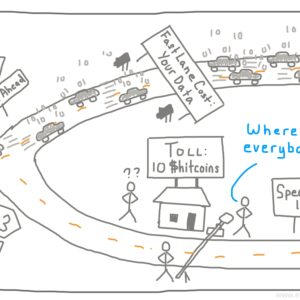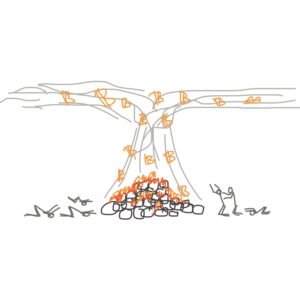Ruby Explained: Writing and Running Methods
This post will dive a bit deeper into how to write and run methods in Ruby the right way
You’ve been using methods since square one and writing your own as well so we’ll focus on the essentials and the slightly more advanced stuff in this section, including how you actually run your code without needing to use IRB and some more stylistic issues that come up frequently.
What should you put into methods? Pretty much everything should be in a method, but each method should only do ONE thing. If it’s doing two, it’s time for another method. If it’s doing a dozen, you probably need to start thinking about having a separate class.
Methods help organize your code by keeping you from repeating yourself. Anything that you find yourself doing repetetively should probably go in its own method.
Methods also make your code much easier to read and debug, a fact that you’ll appreciate when you write some horrendously complicated spaghetti code and it takes you longer to figure out what it is doing than how to debug the error message you’re getting.
Let’s say you’re building a game that uses an until loop to keep taking turns until someone has won. But figuring out if someone has won takes several lines of code. You really can’t say until ( 8 lines of code determining if anyone has one) Better to write a method called #game_over? that does the work, then you can simply and legibly write until game_over? and it’s obvious what your code does.
The #game_over? method probably needs to check if the human player has won or has lost, so maybe your #game_over? method just contains calls to two other methods, #victory? and #loss? If you were debugging, it’d be very easy for you to go and find where the problem is if the player just can’t seem to lose:
def game_over?
victory? || loss?
end
def victory?
# check for victory, return true/false
end
def loss?
# check for loss, return true/false
end
Methods should be SHORT! If they’re >10 lines, you’re probably doing too much. When you look at the open-source projects on Github, their methods are often incredibly short. Good code doesn’t look long, it looks brief but descriptive.
A method should be self-contained and only use those variables that have been passed in. Don’t modify global variables or otherwise have side effects for your methods. By the same token, don’t destructively modify the arguments or the object your method was called on (unless it’s explicitly a bang! method).
When naming methods the goal is to be descriptive but short. Name based on what it will return or what the major intended side effect will be. You shouldn’t be missing any parts from the name because the method should only do one thing anyway. If you can’t tell what the method will return based on the name, you probably need a better name. If your method name seems insanely long, your method may be trying to do more than one thing. End with a question mark ? if it will return true/false.
What is self? It’s a word that you see a whole lot in Ruby and it’s actually pretty simple… it refers to whatever object the current method was called on (the "caller"). So if I called current_user.jump, current_user is the caller of that method. Inside the definition of the #jump method, self would refer to the current_user.
That is incredibly useful because we create methods that could be called by any number of different objects so we need a way inside of that method to dynamically refer to whatever object called it. You may see something like this, which I could call on a hypothetical User object in my web application:
def full_name
"#{self.first_name} #{self.last_name}"
end # Remember, this implicitly returns the string "firstname"
You’re probably tired of running your methods in IRB (if that’s what you’re still doing) so it’s time to learn how to break them out into a separate script file which you can then run in its entirety from the command line. It’s easy — just create a file with the extension .rb, navigate to that file’s directory from the command line, and run it using $ ruby filename.rb (the dollar sign is just the command prompt). You’ll be able to gets from and puts to the command line now!
If you get tired of typing ruby in front of the file, you can tell your computer that the file is an executable one by using the chmod command. Just type $ chmod +x your_filename.rb once and you’ll be able to execute it, but you now need to let the computer know that it should use the Ruby interpreter when running the file. That requires you to include, at the very top the file (before any spaces or lines), a Shebang Line that points to your Ruby executable:
#!/usr/bin/ruby
…or wherever it’s located.
If you want to include a gem file (a library of methods, for instance) in your IRB session, you’ll need to use require to bring it in. The default directory for require accesses any gems you may have downloaded from the internet.
You can do almost the same thing to bring your new script file into IRB (if you want to access its methods, for instance), though you have to explicitly provide the path to it. If it’s in your current directory, that’s easy, it’s just ./filename.rb:
> require './your_script.rb'
=> true
Now you can run methods and access variables from that file in IRB. If you were to change and save your script file, to get those changes in IRB you can either reload IRB entirely or use load instead of require. require will only load the file once, a feature designed to save you headache normally. load will load it for you regardless.
> load `./your_script.rb`
=> true
Another thing that you’ll probably want to do at some point is to access the variables that were passed to your script from the command line. For instance, if you ran:
$ ruby ./string_printer_script "howdy" "everyone"
You’ve passed in "howdy" and "everyone". You access it by digging into a special constant (a variable you shouldn’t try to change) called ARGV, which is an array that contains all those arguments:
# In our string_printer_script.rb file:
inputted_strings = ARGV
puts "You inputted: "
inputted_strings.each do |str|
puts "str"
end
$ ruby ./string_printer_script.rb "howdy" "everyone"
You inputted:
howdy
everyone
A few other special constants you can access from within your script:
-
__FILE__is the name of the current file. -
$0is the main or original file that was run (which could be different from your script if your script had just beenrequired by that original file). -
$(aka$LOAD_PATH) is an array that contains the "load path", or all the directories the interpreter searches through when it needs to find a file.
A trick you can sometimes use to check whether your script is being run from the command line or as part of a larger program, for instance if you want to puts some stuff only if it’s called from the CL (to debug it maybe), is to check whether $0 is the same as __FILE__:
if $0 == __FILE__
puts "I'm a command line script now!"
else
puts "Someone else is running me (I feel so violated...)"
end
Stepping away from scripts for a minute, one nifty command that you probably haven’t had a chance to run into yet is #send, which will let you run a method. Simple. Just call it on whatever object you’d normally run the method on. Adapted from the docs:
class Klass
def hello(string)
"Hello #{string}"
end
end
k = Klass.new
k.send :hello, "gentle readers" #=> "Hello gentle readers"
So simple, why should you care? Ruby lets you define new methods in runtime and this lets you call them dynamically (since the method name is no longer hardcoded). Keep that in your back pocket… you won’t need it yet but it’s great to know.
*The “Ruby Explained” posts are designed to be a sort of “In-Plain-English” version of key Ruby concepts which are usually covered in other introductory texts but rarely for free and often incompletely. When I’m learning a new thing, I usually want someone to explain it to me like I’m a five year old because that’s the best way to make sure nothing gets missed. This is my attempt to pass that same sentiment on to you. Let me know if there’s anything I can improve.*
If you’re just getting interested in this stuff, check out The Odin Project for a free curriculum to learn web development.






